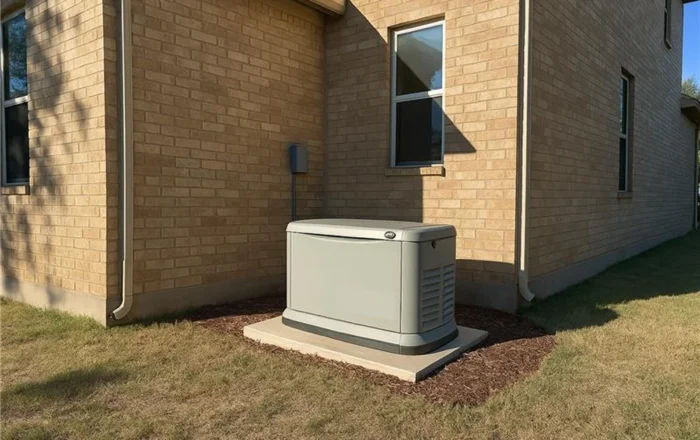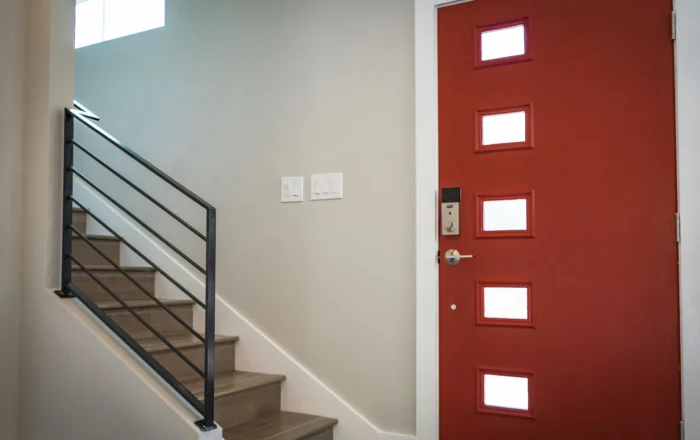How to Choose a Generator for Your Home
6 minute readHow to choose the right generator for your Texas home
Home > Blog > How to Improve Indoor Air Quality: 12 Ways to Clear the Air
5 minute read • Last update May 2024

Limiting exposure to air pollutants like dust mites, pet dander, mold spores, and volatile organic compounds (VOCs) is key to improving indoor air quality.
Here’s a comprehensive list of strategies you can use to reduce the presence of harmful particles and improve your home’s rating on the indoor air quality index.
Air purifiers are portable air cleaners designed to remove airborne contaminants. They work by drawing in air and passing it through filters to trap pollutants. Installing an air cleaner can significantly improve indoor air conditions, particularly in areas with limited natural ventilation.
Regularly replacing the air filters in your home heating and cooling system will improve air flow and prevent captured particles from circulating. Filters on HVAC systems like air conditioning units are usually easy to self-maintain. You should also consider periodically replacing the HEPA filters (high efficiency particulate air filters) in your vacuum cleaner and air purifiers.
Sheets, pillowcases, and mattress covers harbor dust mites, allergens, and other pollutants, leading to a reduction in overall air quality. Washing bedding regularly in hot water helps to eliminate contaminants and make your bedroom air cleaner. Using allergen-proof covers further reduces exposure, significantly lowering the potential for respiratory viruses to affect your family.
Using gas appliances and burning wood, candles, and other materials releases harmful chemicals like carbon monoxide alongside particulate matter. To mitigate risk, one option is to invest in an indoor air quality monitor. Regular indoor air quality testing is invaluable in providing peace of mind. However, it’s also wise to consider more energy-efficient heating sources like electric heaters and heat pumps that minimize combustion-related air pollution and health risks.
Smoking is a significant health risk, and when it comes to indoor air pollution, tobacco smoke is a major contributor. It releases harmful pollutants like tar and carcinogenic chemicals into the air. To avoid poor air quality in your home, it’s best to smoke outside. This simple action can help maintain healthier air inside your living spaces.
Regular vacuuming promotes good air quality by removing particles that accumulate on floors and carpets. Top tip: be sure to use a vacuum equipped with a HEPA filter to effectively capture small particles and prevent them from becoming airborne. As for how often you should vacuum, experts recommend every few days in high-traffic areas and other rooms once weekly.
We know what you’re thinking: how can you improve indoor air quality by checking for outdoor air pollution? Many homeowners are surprised to learn how big a role outdoor air plays in indoor air quality. You can run an outdoor or indoor air quality test quickly and easily by downloading the AirNow mobile app. Designed by the Environmental Protection Agency, the app displays current and forecasted air quality index (AQI) readings.
On days when outdoor AQI readings are favorable, opening windows and doors can help flush out indoor air pollutants and introduce fresh air to improve ventilation. Natural ventilation allows clean air to circulate through your home by diluting sources of indoor air pollution and reducing their concentration.
Poor ventilation results in inadequate air exchange, leading to the buildup of pollutants caused by indoor sources like cooking fumes, pet dander, tobacco smoke, and more. Using exhaust fans in bathrooms and kitchens helps to improve air quality by removing moisture and odors and reducing the risk of mold growth.
Conventional cleaning products often contain harsh chemicals. Making the switch to natural alternatives not only promotes clean indoor air but also contributes to a healthier home environment for you and your family. Look for cleaning products labeled “green” or “eco-friendly.” These typically contain plant-based ingredients and fewer synthetic chemicals.
Certain indoor plants have been proven to act as air fresheners by absorbing airborne toxins as part of the photosynthesis process. The list of top purifying house plants includes peace lilies, chrysanthemums, spider plants, snake plants, and aloe vera. Placing some of these in areas with limited ventilation can significantly improve indoor air quality test readings.
Managing the humidity of the air indoors helps to create a healthier environment for your entire household. Dehumidifiers can be used in damp areas like basements and bathrooms to reduce excess moisture. Conversely, in dry climates or during winter months, humidifiers can help by adding moisture to the air.
With the basics of how to improve indoor air quality covered, it’s time to delve a little deeper into the sources of indoor air pollution:
Most people spend around 87% of their time indoors, and it’s estimated that indoor air pollutants cause over four million deaths per year — most of which are preventable. So, it’s fair to say that indoor air quality is a more critical aspect of our living environments than most people realize.
Research continues to underscore the significant impacts of poor indoor air quality on health, particularly among vulnerable populations like children, the elderly, and individuals with pre-existing health conditions. Specific health hazards related to household air pollution include:
Proactive measures are essential in creating healthier indoor spaces conducive to optimal health and well-being.
Aside from the AirNow app we mentioned above, there are various other methods of conducting indoor air quality testing, ranging from simple observations to professional testing services:
Learning how to improve indoor air quality is integral to ensuring a greener, cleaner, and more sustainable living environment for your family.
Take the next step towards a healthier home by exploring BKVE’s low-cost, straightforward energy plans. Our affordable rates lead to lower bills even with higher usage from increased square footage, and making the switch can save some Texans up to $500 per year!
Enter your zip code to learn more and find the right plan for your household.
Graham Lumley, Digital Marketing Manager at BKV Energy, leads digital and traditional marketing strategies, focusing on educating Texans about the state's deregulated energy market. With over 8 years of marketing experience, he creates content to help consumers understand and save on their energy bills, bringing a fresh and dynamic approach to the industry.

How to choose the right generator for your Texas home

Energy Saving Tips Home Improvement
Choosing the right energy-efficient door can help Texas homeowners reduce cooling costs and improve home comfort year-round.
Get $50 off your electric bill!
Use code BKVEJOINUS50
Enter your zip code to shop BKV Energy's affordable, fixed-rate Texas electricity plans. Use the promo code for $50 off your electric bill.